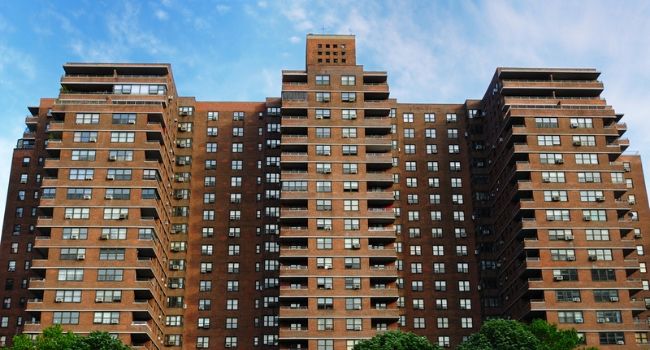
Lawmakers Seek to Ban Biometric Recognition Technology in Public Housing
The legislation, which would ban facial recognition entry systems, would be the first to address what technology landlords can impose on residents.
- By Haley Samsel
- Jul 26, 2019
Three Democratic congresswomen are pushing for a ban on the use of biometric and facial recognition technology in federally funded public and assisted housing with the aim of “protecting tenants from biased surveillance technology.”
The No Biometric Barriers Housing Act was introduced on Thursday by Reps. Ayanna Pressley (D-Massachusetts), Yvette Clarke (D-New York) and Rashida Tlaib (D-Michigan) amid a growing national debate about the role of facial recognition technology in society, particularly by law enforcement.
There is currently no federal law on the books regulating the use of facial recognition technology by police departments or other public institutions, such as housing funded by the Department of Housing and Urban Development. This makes Pressley’s bill the first to address what technology landlords can impose on residents.
“Vulnerable communities are constantly being policed, profiled, and punished, and facial recognition technology will only make it worse,” Pressley said in a statement.
“Program biases misidentify women and people of color and yet, the technology continues to go unregulated,” she added, referring to research and testing that shows facial recognition technology is less accurate for women and people of color.
Read more: Orlando Police Department Ends Facial Recognition Pilot Program With Amazon
Along with a ban on facial recognition, the bill would require HUD to write and submit a report to Congress that analyzes any known uses of facial recognition in public housing, the purpose of installing technology in those units and the impact of the software on tenants’ civil rights.
For Tlaib and Clarke, the fight over facial recognition software has become a local priority in recent months. In Clarke’s Brooklyn district, over 130 tenants filed legal opposition against their landlord in May after the building sought to install a facial recognition entry system.
Those tenants argued that the system would violate their privacy rights and could lock out black, brown and female residents from their own homes, according to a release from Legal Services NYC. This bill would not affect the Brooklyn building or the company that owns it since the apartments are not public housing.
Clarke said the community uproar was a catalyst for her to craft legislation that addressed concerns about facial recognition surveillance, a system she called “flawed.”
“Someone living in public housing should not be the guinea pig for the emerging technology of biometric facial screening just to enter their own home,” Clarke said.
Tlaib’s Detroit district has also been at the center of a debate over police use of facial recognition software in a city-wide video surveillance program, referred to as Project Greenlight. Police officials there have said they only use facial recognition to investigate violent crimes and do not arrest anyone solely on the basis of a match within the system.
Read more: Opposition to Government Use of Facial Recognition Technology Grows in Detroit
The federal legislation co-sponsored by Tlaib would affect the program since some of Project Greenlight’s high-definition cameras are set up at public housing complexes, according to The Detroit Metro Times.
“We’ve heard from privacy experts, researchers who study facial recognition technology and community members who have well-founded concerns about the implementation of this technology and its implications for racial justice,” Tlaib said. “We cannot allow residents of HUD funded properties to be criminalized and marginalized with the use of biometric products like facial recognition technology.
Tlaib and Pressley are both members of “The Squad,” a group of four freshmen Democratic women of color in the House that also includes Rep. Ilhan Omar (D-Minnesota) and Alexandria Ocasio-Cortez (D-New York). The quartet has been in the headlines in recent weeks for their ongoing feud with President Donald Trump.